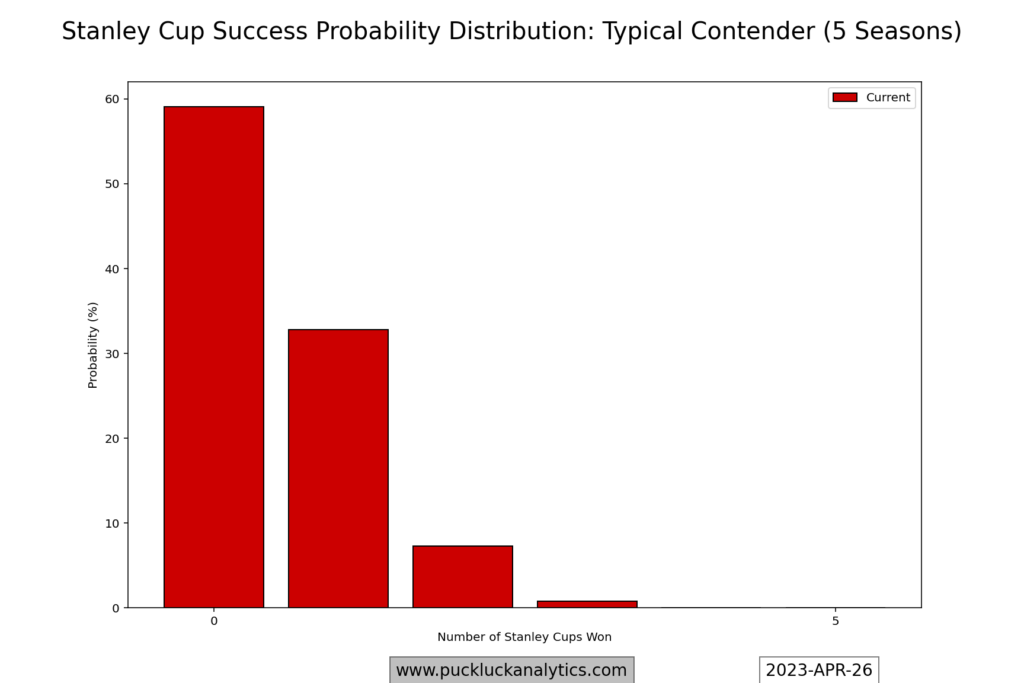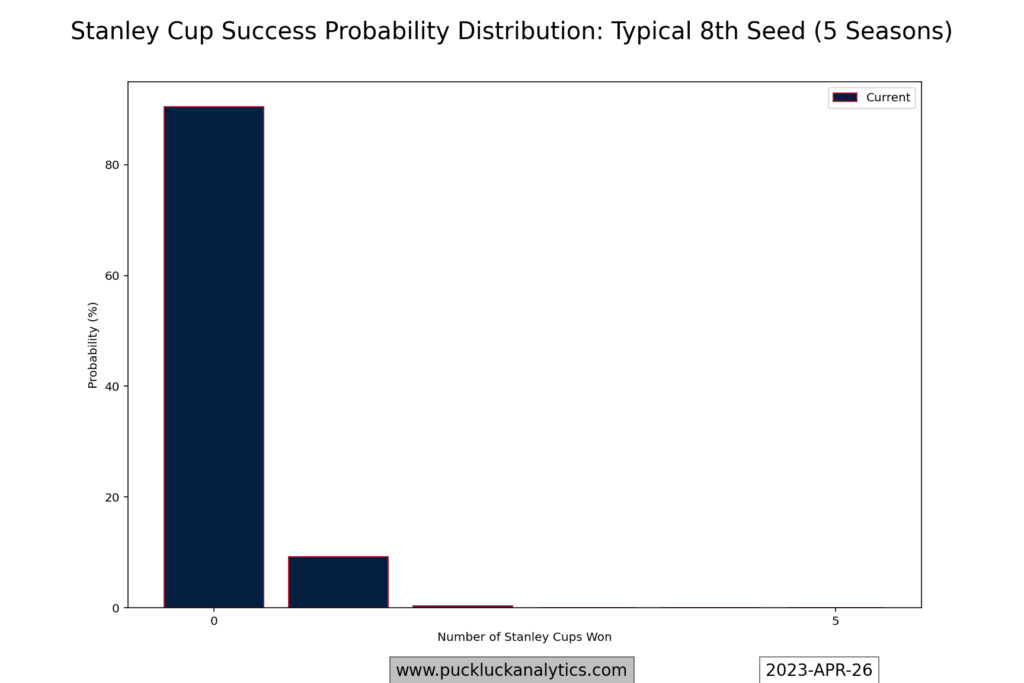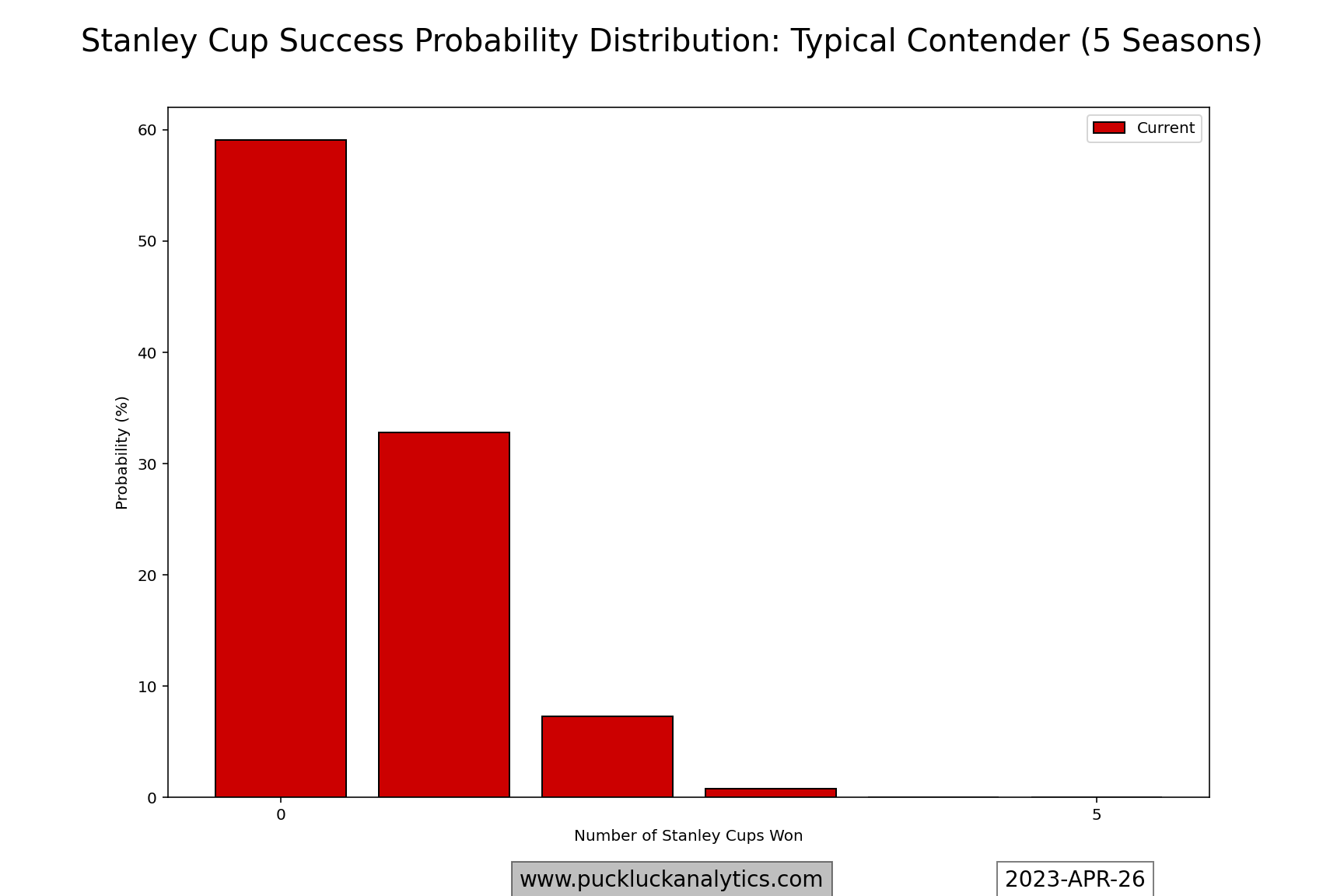It’s common to see or hear hockey fans and analysts talk about contention windows. The idea is to build a team that is good enough to go on long playoff runs with a legitimate chance to win the Stanley Cup over a period of more consecutive seasons. It’s long term thinking that optimizes a team’s chances to win it all at some point during that contention window rather than loading up with a short term focus of winning in particular season. Why is it so important to build toward a contention window instead of going all-in for a single season?
Single Season Odds
To start with, we need to understand the probability of a team winning the Stanley Cup in any one season. My playoff model only looks at one series at a time for now, so we’ll lean on some of the other well known public models. Models from HockeyViz, the Athletic and MoneyPuck from the start of this season’s playoffs give us a reasonable sense of what a contender’s chances are.
Across all three models, the top contenders have only about a 10-15% chance of hoisting the Cup this June. Even the Bruins, who had historic regular season success this season, top out at 23% in the Athletic’s model. Those are pretty long odds considering the Bruins pulled out all the stops to load up for what might be the last good shot at another cup with their current core.
5 Year Window Odds
Seeing the historic regular season from the Bruins this year result in their chances of not winning the cup this spring sitting 3 times greater than their chances to win it, it may start to look like winning the Stanley Cup is more about luck than it is about building the best team. Perhaps the age-old mantra that ‘you just have to get in’ is true after all.
If we widen our focus from a single season to multiple seasons, though, it becomes more apparent how valuable a longer term focus on teambuilding is. Maintaining a team as strong as the 22/23 Bruins for multiple seasons might be unrealistic, but building a team that can stay among the league’s elite for 5 straight season is certainly possible. From the playoff model odds we looked at earlier, it’s quite plausible to build a team that could have at least a 10% chance at winning the Cup each season over that time horizon. 10% may even be a bit stingy, but we’ll use it here.
By combining the probabilities for each season, we can put together a probability distribution of how many cups such a team is likely to win over that 5 year period. In a single season, the odds of not winning the Cup is 90%. If they can maintain that level for 5 years, the odds of not winning a single Cup in those 5 seasons drops to 59%. It’s still far from a certainty and is much closer to a coin flip instead. Not only that, but there odds of winning more than one cup in those 5 years is around 10%.

Now, let’s look at a team that is focused on simply trying to make the playoffs every season, making decisions that keep them around the playoff bubble but unable to move into contender status. From the single season playoff models, we can see a typical 8th seed has only a 1-2% chance to win the Cup. We’ll be generous this time, and use 2% odds sustained over 5 seasons.

The result? Roughly a 10% chance of winning at least one cup over 5 years. Roughly the same odds as a contender has in a single season.




